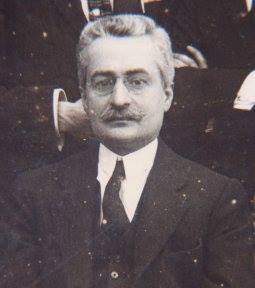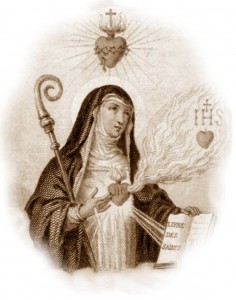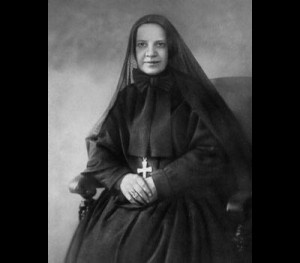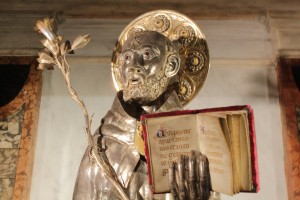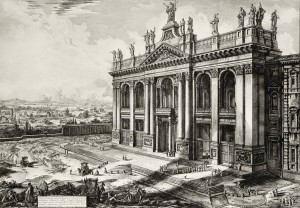 Today, the Church celebrates the liturgical memory of Queen Saint Elizabeth of Hungary or Thuringia (1207-1231), patroness of the Brothers and Sisters of Penance, the Franciscan “Third Order.” (The Third Order has evolved over time: today it has a the Third Order Laity known as the Secular Franciscan Order, and the Third Order Regular, which is the group of men and women who take the evangelical counsels and live in religious houses as priests, brothers, & sisters.)
Today, the Church celebrates the liturgical memory of Queen Saint Elizabeth of Hungary or Thuringia (1207-1231), patroness of the Brothers and Sisters of Penance, the Franciscan “Third Order.” (The Third Order has evolved over time: today it has a the Third Order Laity known as the Secular Franciscan Order, and the Third Order Regular, which is the group of men and women who take the evangelical counsels and live in religious houses as priests, brothers, & sisters.)
Elizabeth was the daughter of the King of Hungary who at the age of four was sent to be raised with her future husband, heir to the country of Thuringia, at the Wartburg Castle, near Eisenach, Germany. Elizabeth’s heart was always drawn to prayer and works of charity. As a consequence of good preaching, teaching and good example, particularly her education in the ways of Saint Francis, Elizabeth’s compassion for the poor grew and was extroverted. The presence of dynamic Franciscans in Eisenach was a good help.
There seems to be contradictory information floating around that her husband was against the charitable work of his wife, Queen Elizabeth. The Franciscan tradition actually holds Ludwig in esteem as being loving and supportive of her efforts. When King Ludwig died in 1228, Elizabeth made a consequential gift of self allowing herself to take up the God-given mission of giving all “to the things that our Savior had counseled in the Gospel” and by placing herself under the spiritual authority of the Franciscan friars at the church in Eisenach. She dispossessed herself of her material belongings and devoted herself to the care of the sick in a hospital she had established in Marburg. Queen Elizabeth died at the age of 24, and was canonized in 1235.
Saint Elizabeth lived out Holy Father Saint Francis’s call: “Let us love our neighbors as ourselves . . . Let us have charity and humility and give alms because it washes the stains of our sins from our souls. For although people lose everything they leave behind in this world, they, nevertheless carry with them the rewards of charity and the alms they have given, for which they will receive a reward and a fitting repayment from the Lord” (Admonition and Exhortation, 30, known also as The Letter to the Faithful).
With the feast day of Saint Elizabeth, we ought to have a special concern for those Catholics who have as their particular charism the care for the marginalized, those who require hospital care, and other works of charity influenced by Matthew 25.
